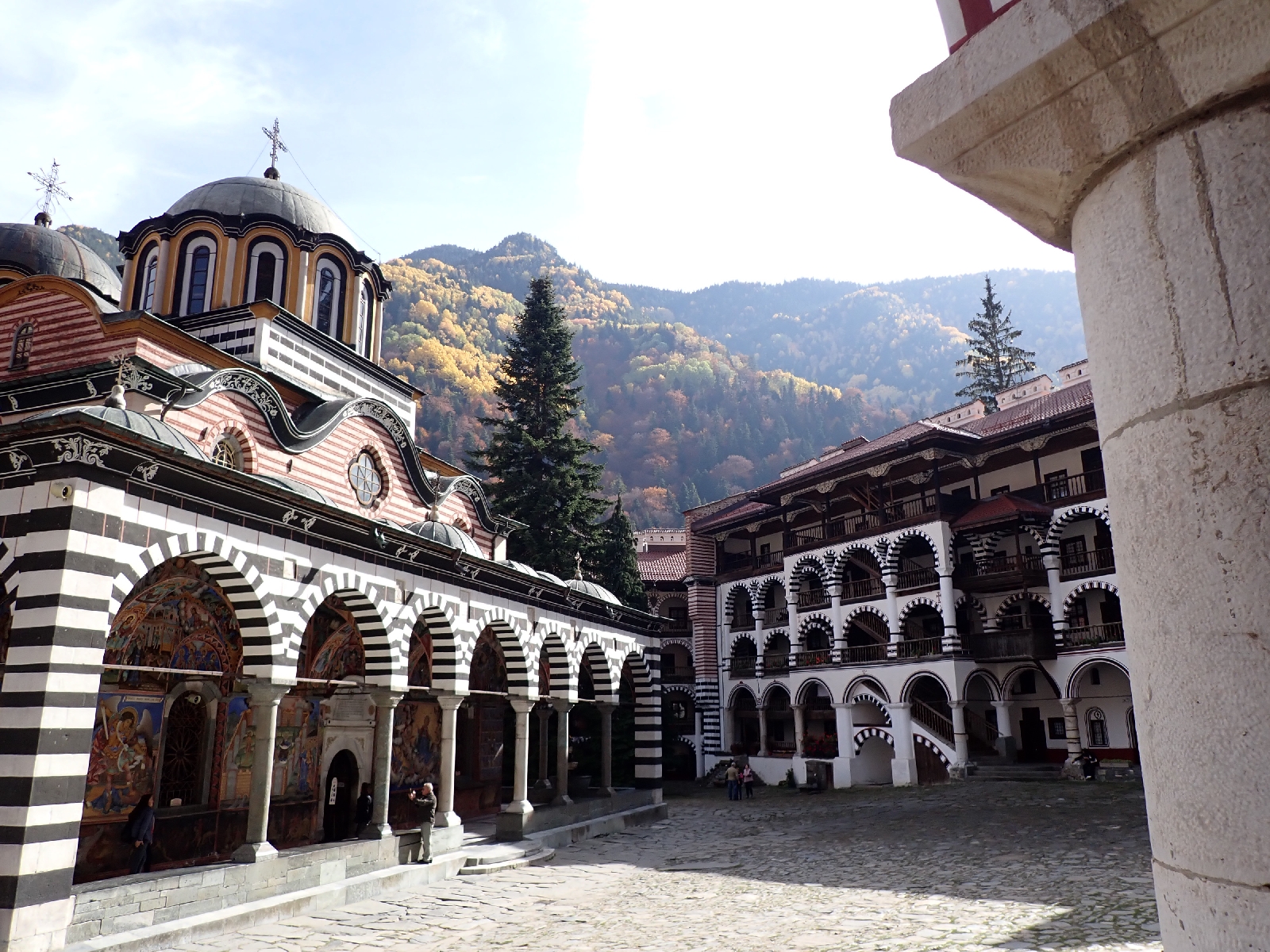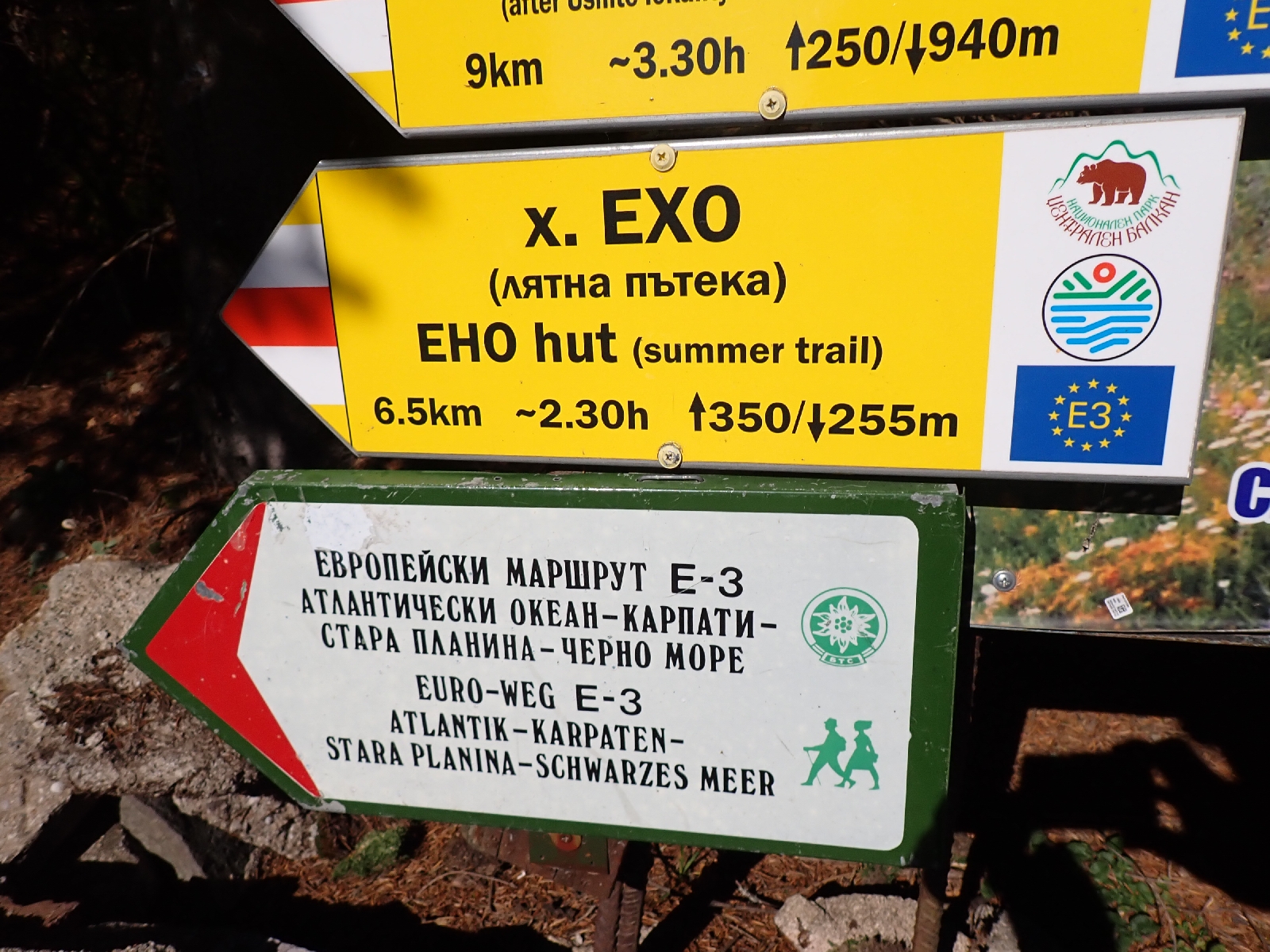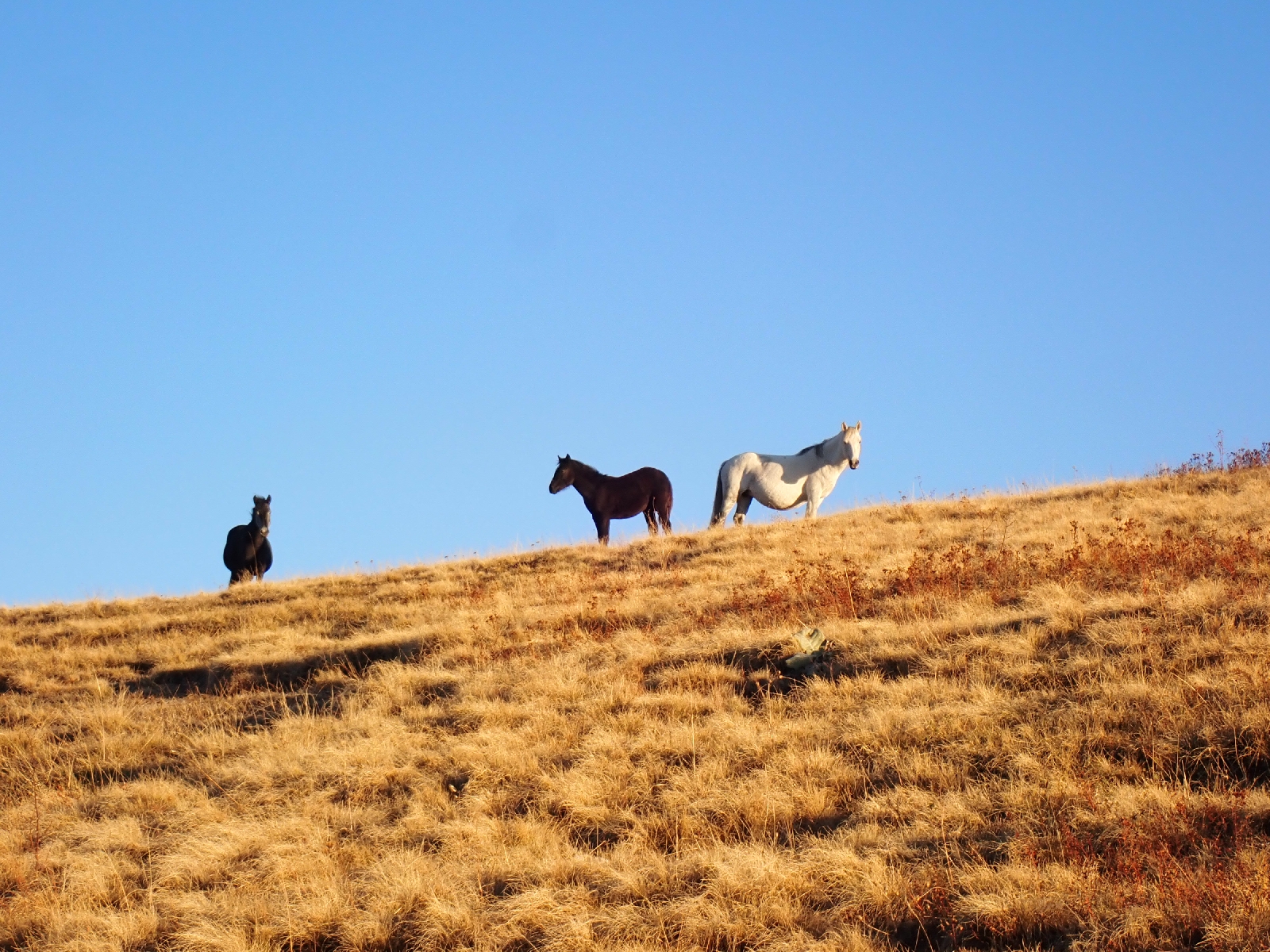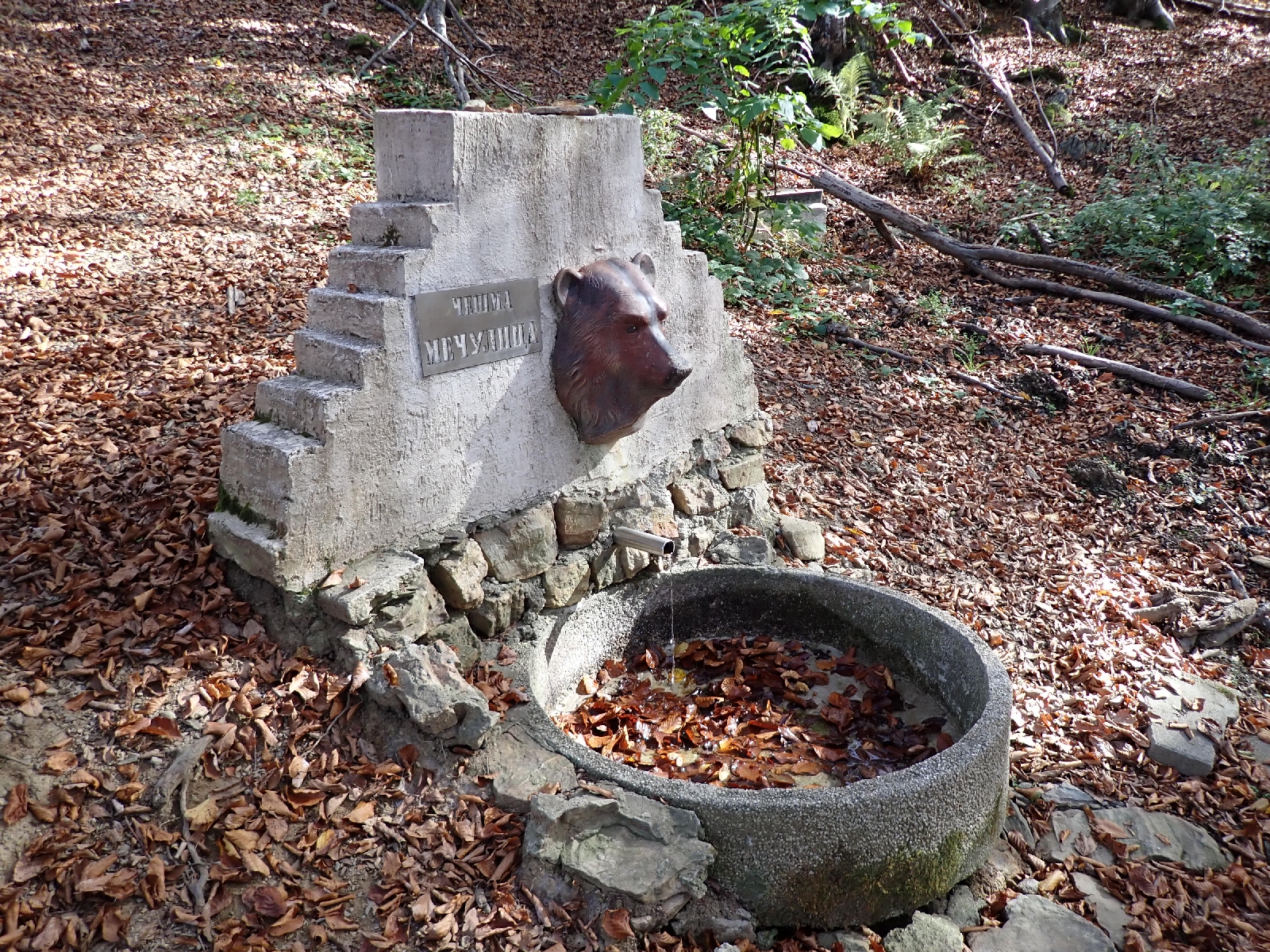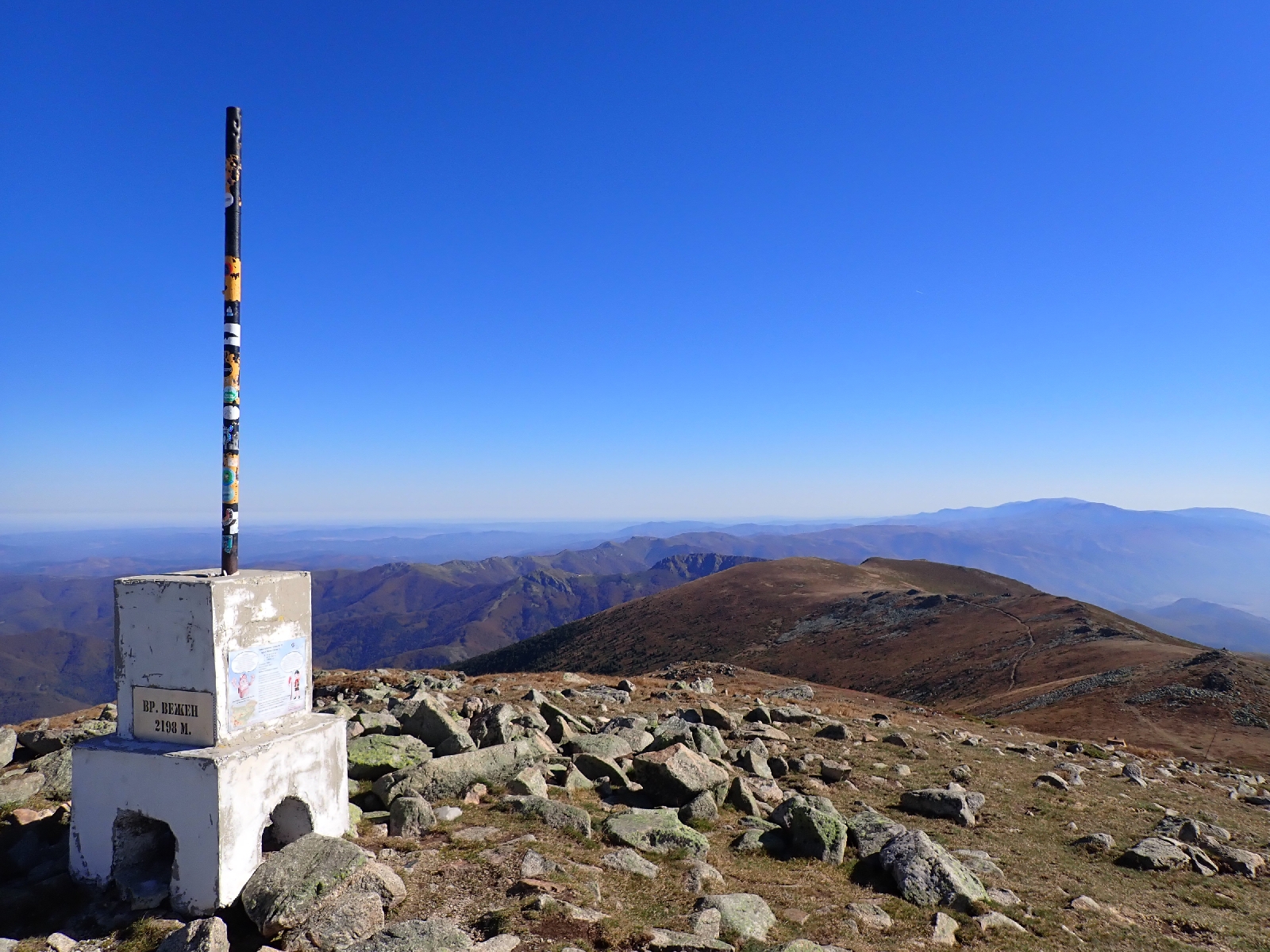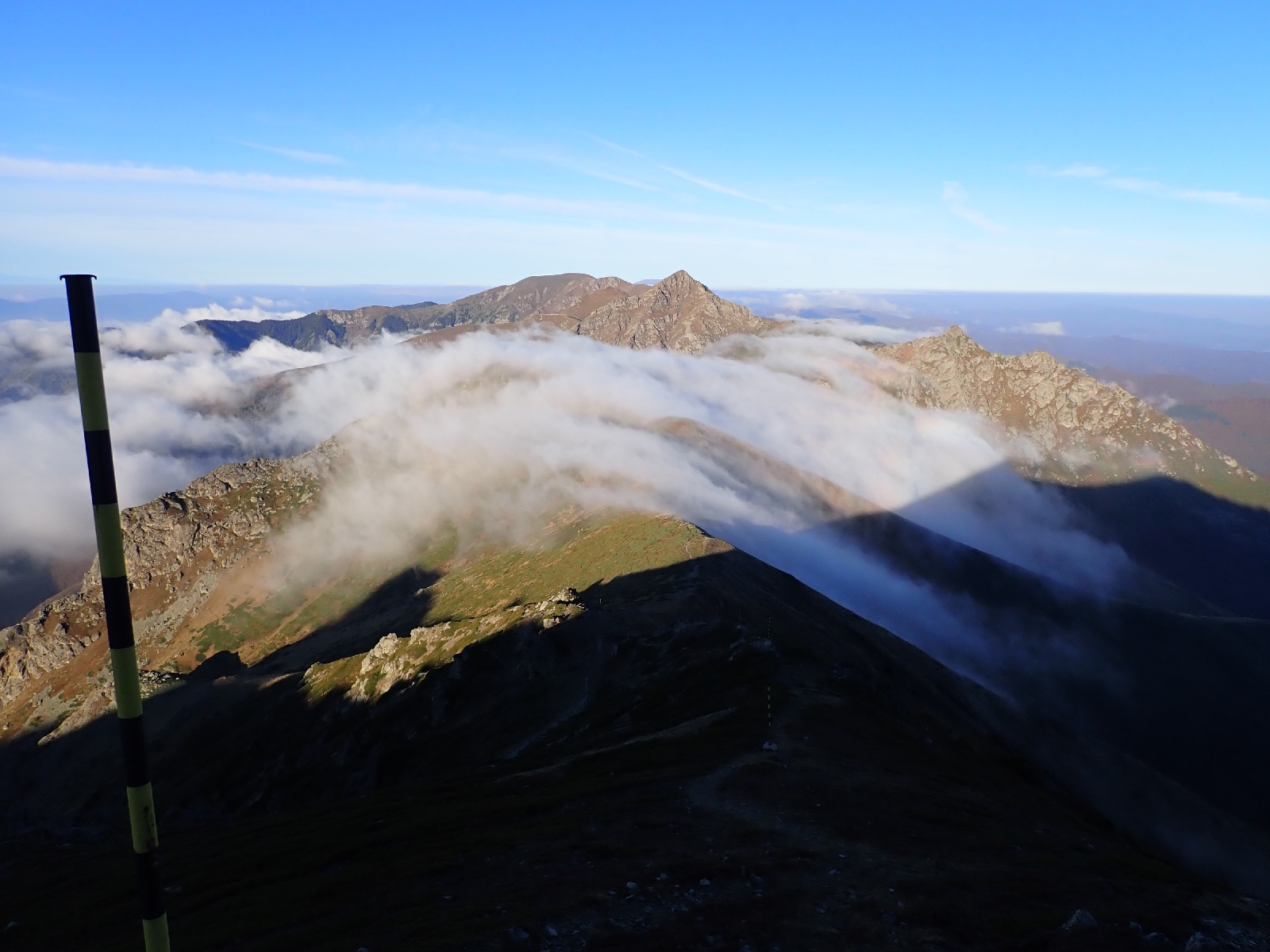A long day walking from the vicinity of Kom Peak to the comfort of a hotel in Dragoman.
After sleeping well, cosy in my winter sleeping bag with my long johns and two layers of clothing, I woke to find thick, white frost covering my flysheet. It was so cold I used my insulated jacket for the first time this trip, wearing my gloves to take the tent down. Was it worth carrying them all the way across Bulgaria just for this morning? I started off around 6:30 am and by 9 am the sun and the exercise had heated me up so much that I was down to my sweat shirt again.
 |
| Morning walk. |
Initially the route to Dragoman I had downloaded from the
TEAR (Trans European Alpine Route) website worked well. There were a few places where tracks divided that confused me as to which I should choose, only for the tracks to re-join a little later making the choice irrelevant. No doubt such splits in the route were created by those on 4 wheel drives wishing to avoid the more eroded sections created by their predecessors.
 |
| Looking at the next range of hills to cross. |
 |
| More woods to walk through. |
In heading south to Dragoman it was necessary to cross several lines of mountains, not so high but obstacles nevertheless. After crossing two such ridges I decided to avoid the third, climbed by the TEAR track, instead following the road to the town of Godech which was along a river valley that cut through the lines of hills. Approaching Godech I spotted an open shop and asked for a coffee. Such shops often have a small coffee machine and this was no exception. I sat outside enjoying my coffee with a spiral of flaky pastry filled with white cheese, watching the comings and goings; old men, children, mothers and toddlers. The shop keeper also kindly refilled my water bottle. I was glad the shop was open as it was Sunday. I passed a church with lots of domes but did not go in as there seemed some activity inside. In the centre of Godech there were apartment blocks. People were ambling along the streets chatting or spending a sunny Sunday sitting outside. A line of shops were closed but a supermarket was open, not that I needed anything. On the lampposts were banners with what I initially thought was a lions head, closer examination revealed the "face" was made of stylised conifer trees, a sheep's head and two coronets, the symbol of the town.
Leaving Godech I followed the road and then the TEAR route into the next line of mountains. Here I ran into difficulties. The TEAR track followed a path shown on two of my maps. That a path once existed was beyond doubt, however it was now overgrown and when faced with impenetrable thorny bushes, around which I could find no diversion, I was forced to admit failure and retreat. There were few crossings of the range of mountains in front of me and gaining a mistrust of marked paths I decided to follow the road, a longer way to Dragoman but at least reliable. Not wanting to retrace all of my steps back to Godech, I followed a clear track along the valley bottom heading towards the next village. Initially all went well, then the track turned, heading north. Once out of dense woods onto grassland I searched for a track heading in the westerly direction I desired. After one false start I found one that joined the road I wanted.
My road route took my by several villages. It was the day of the General Election and there were posters for different parties posted on any available space. It was a "snap election" as no party of the many elected had a majority and they could not agree a coalition government. The TV had provided a lot of coverage although none of those interviewed looked very charismatic. By now the sun was lowering in the sky. The days were shortening and today the clock went back last night making darkness sooner. I was planning to camp tonight but among the villages intersected by the road there were few good camping spots. Around the road the fields were used for hay. A few tractors were out ploughing. It was difficult to see any discrete spots, hidden from the road and village houses. Other areas had impenetrable undergrowth. A sign said Dragoman 12 kilometres. It was not so far, and as darkness fell I had little choice but to make Dragoman my destination for the night despite having to walk part of the route after sunset. It was just too dark to find a suitable camping spot.
There was little traffic on the road. I used my head torch as darkness overtook me, both to see after the sun set in a sky of pinks and blues, and to alert the rare car, and a convoy of motorbikes, of my presence. The village of Prekraste was particularly challenging. Each village has a dog or two that announced my passing with a volley of barks, but in Prekraste it was taken to excess. By now it was dark, although bright street lights created periodic circles of light on the road through the village. As I walked by each house there was an outbreak of excitable barking behind wire fences. Each house picked up the cry from the previous house, trying to outdo each other in noise volume. A few loose dogs provided mobile barking from various angles. I hurried on.
There was a long period of walking on the roadside in moonless blackness. Multiple bends as the road climbed, descended, then climbed again, were marked by reflective red and white chevrons that where picked out by my head torch. Trees lined the higher parts of the route. Above my head the night sky was studded with stars, although I was disappointed to see no sign of the Milky Way. Moths fluttered into the light from my head torch. A few bats flapped by.
I was pleased to see the sign announcing that I was entering Dragoman, even if it seemed two kilometres too soon. However after the sign, streetlights started to spread pools of whiteness on the road and soon, the welcome lights of Dragoman spread out across the valley in front of me. It seemed a long walk down a straight road, houses on one side, weeds growing through the cracked pavements, but eventually I walked under the motorway and made my way to the Dragoman Hotel. The restaurant next door was still open, so I celebrated finishing my walk with a beer, a shopska salad, chicken stroganoff and "cake", which was a kind of squishy dessert. With a rakya to finish off I celebrated the end of my walk, all to the sound of Turkish (?) music from the loudspeakers.
I had walked an excessive distance of over 52 kilometres during the day and as I walked the short distance from the restaurant to the hotel, I realised I had significant blisters on my feet.
